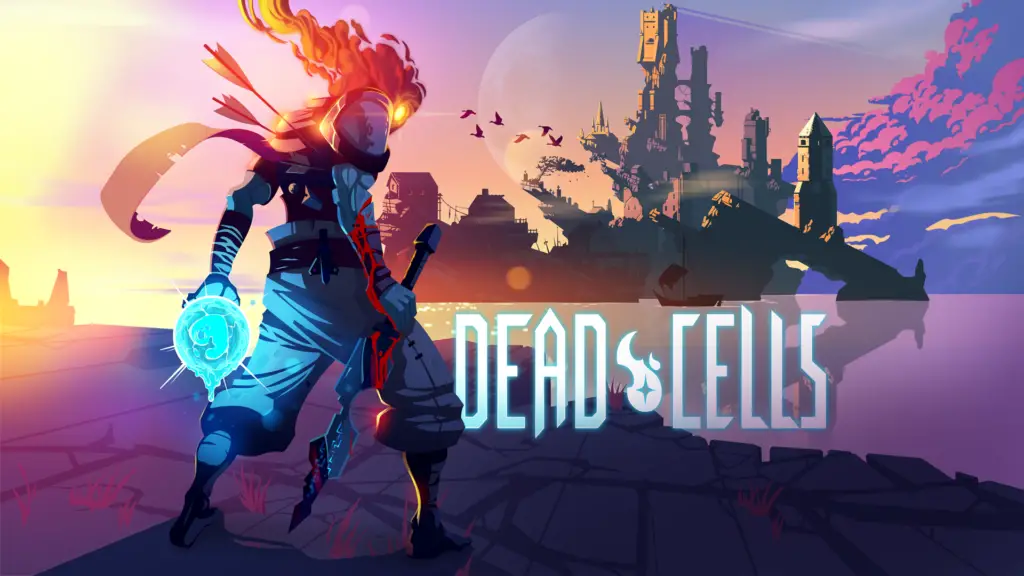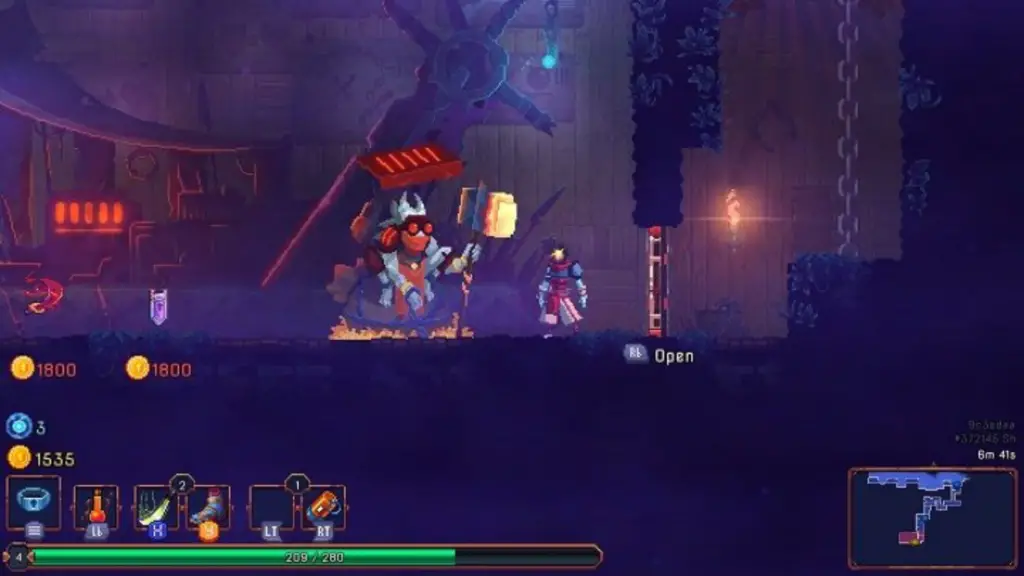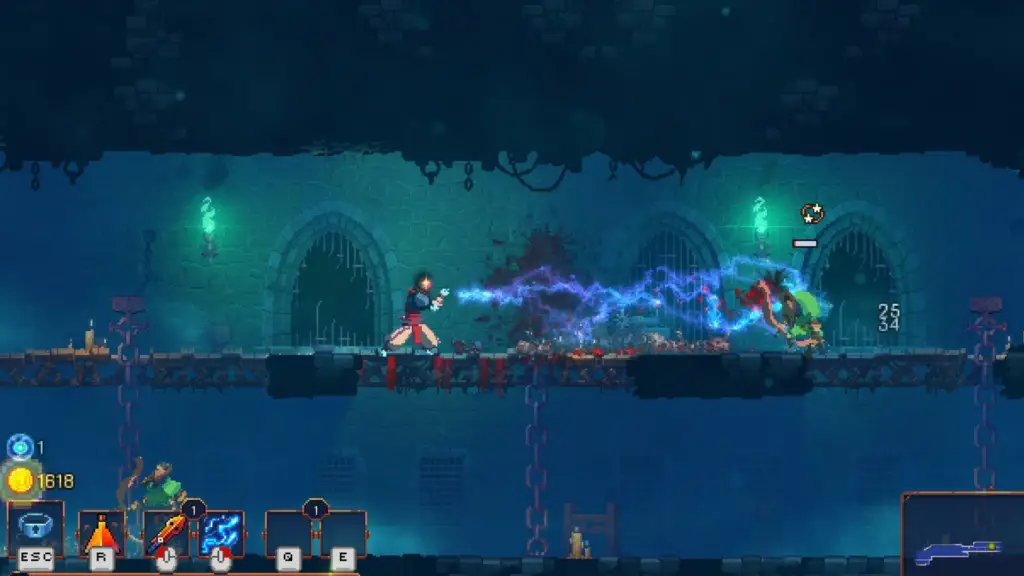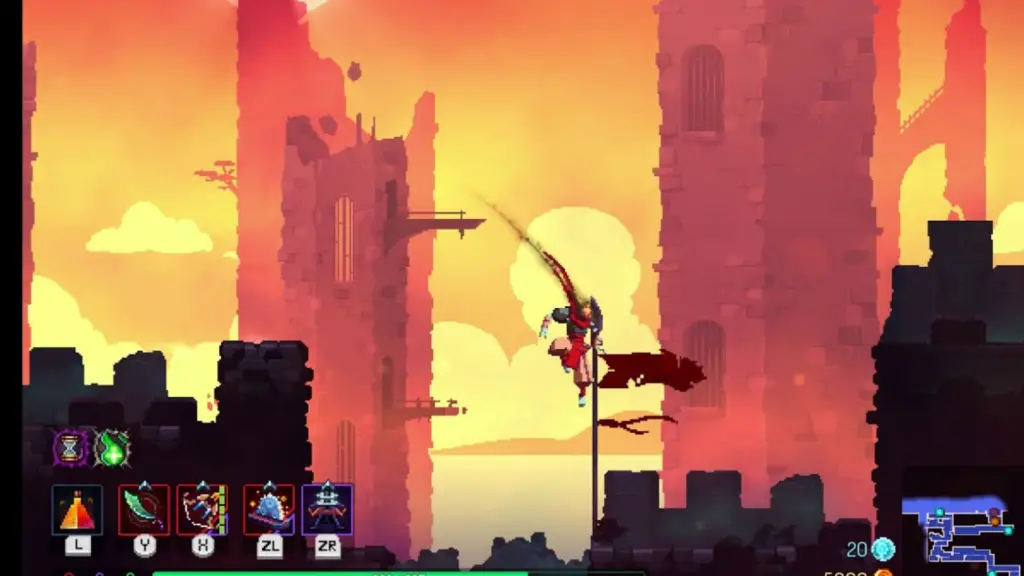How Long is Dead Cells? A Playtime Guide

Dead Cells is a roguelike action-platformer that offers players a unique experience with its procedurally generated levels and wide variety of weapons and skills.
If you’re considering picking up the game or are already playing and wondering how much time you might spend on it, this guide is here to help. We’ll break down the average playtimes based on different playing styles and objectives to give you a clearer idea of what to expect.
How Long is Dead Cells?

Main Story:
For players experiencing “Dead Cells” for the first time and focusing primarily on the main story, on average, it would take 15 hours. This includes navigating through procedurally generated levels, combating a myriad of foes, and experiencing the game’s core progression system.
Main Story + Some Extras:
For players who delve into the main story and also tackle some extras, such as discovering hidden blueprints and exploring off-the-path areas, the gameplay duration is 27 to 33 hours.
Completionists (100%):
Those aiming for 100% completion—finding all blueprints, mastering every weapon, and fully unlocking all the game’s pathways and secrets—can expect to invest about 85 to 90 hours.
Speedruns:
Speedrunners aim to finish the game as rapidly as possible using various strategies and shortcuts and have diverse categories for their runs. As of writing, the speedrun record for Dead Cells’ main story unseeded is 2 hours and 38 seconds.
Factors that Influence Playtime

Navigating the ever-changing labyrinths of Dead Cells is no small feat. Each journey through its cursed corridors is unique, shaped by a mix of player decisions, random generation, and sheer luck. Understanding these factors can help players estimate the time they’ll sink into this challenging roguelike experience.
- Procedurally Generated Levels: Unlike games with fixed levels, Dead Cells uses procedural generation. This means each run can be different in layout, making some playthroughs longer or shorter based on the generated terrain and enemy placement.
- Player Skill: Dead Cells is known for its challenging gameplay. Players new to the roguelike genre or platformers might take longer to progress, while experienced players might blaze through areas more quickly.
- Item and Weapon Variety: There’s a vast array of weapons, skills, and power-ups in Dead Cells. Depending on the combination a player chooses or stumbles upon, some runs might be quicker (due to powerful combinations) or more challenging.
- Exploration vs. Speed: Some players prefer to explore every nook and cranny, searching for hidden blueprints, secret rooms, or lore. Others might prioritize speed, bypassing optional areas. The playstyle choice can significantly impact total playtime.
- Difficulty Settings: Dead Cells features different difficulty settings, also known as “Boss Cells.” Each increased level introduces tougher enemies, more challenging layouts, and additional game mechanics. Playing on a higher difficulty will likely increase playtime.
- Update and DLC Content: Over time, Dead Cells has received updates and DLCs introducing new areas, enemies, and mechanics. Engaging with this additional content can extend playtime.
- Death and Replayability: Being a roguelike, death in Dead Cells means starting over, albeit with some retained progress and understanding of game mechanics. The number of deaths and restarts will factor into the overall time spent in the game.
Criteria for 100% Completion in Dead Cells:

Achieving 100% completion is no easy feat. It demands a mix of exploration, combat expertise, and attention to the game’s myriad details and secrets. As you navigate the challenges of this roguelike action-platformer, here are the specific milestones you’ll need to hit to fully complete the game:
- All Biomes Explored: Players should navigate through and explore every available biome in the game, uncovering all the secrets and pathways each area offers.
- All Blueprints Collected: Dead Cells features a wide array of weapons, skills, and mutations. To achieve 100% completion, players need to find every blueprint hidden throughout the game and then unlock these items using cells.
- All Runes Unlocked: Runes are essential upgrades that provide new movement abilities and access to previously unreachable areas. Players must discover and unlock every rune.
- Bosses Defeated: Each boss in Dead Cells presents a unique challenge. For 100% completion, players should defeat every boss, including those found in optional biomes.
- Achievements/Trophies: Dead Cells offers various achievements and trophies. Earning all of them is a criterion for full completion.
- Highest Difficulty Cleared: In Dead Cells, there are multiple Boss Cell difficulty levels. Achieving 100% completion means players have successfully navigated and completed the game on the highest difficulty.
- All Lore Rooms Discovered: Throughout the game, there are secret rooms containing snippets of lore, shedding light on the game’s story and world. Finding all of these is a part of the 100% journey.
- Fully Upgraded Forge: The Forge allows players to upgrade the quality of weapons found in the game. To truly complete everything, the Forge should be fully upgraded to its maximum potential.
- All Outfits Acquired: Outfits change the appearance of the protagonist and are unlocked in various ways. Collecting every outfit is another step toward full completion.
- All Daily Challenges Conquered: Dead Cells features daily challenges with unique layouts and requirements. While they rotate and change, conquering a significant number or all of them within a given period could be considered a criterion for some completionists.

